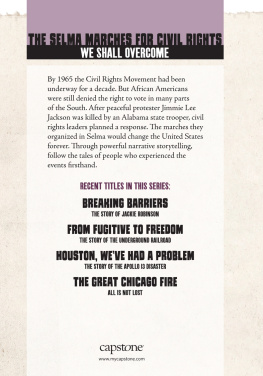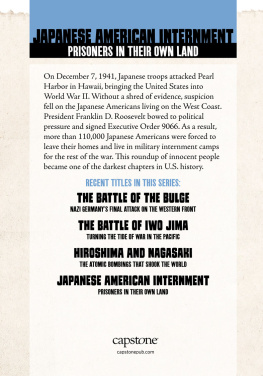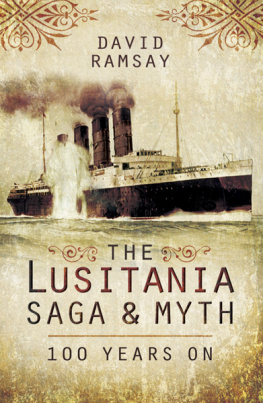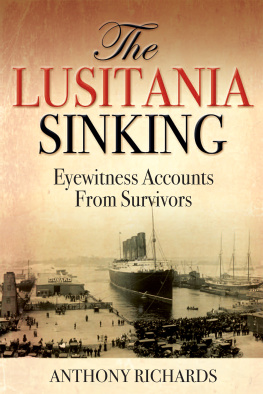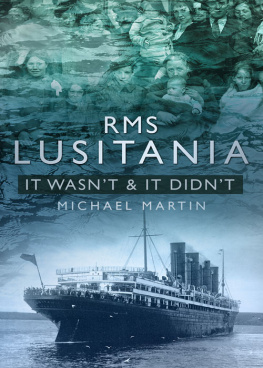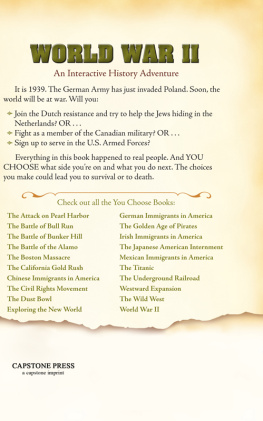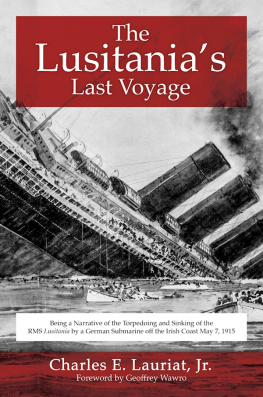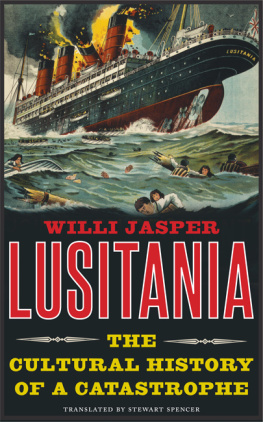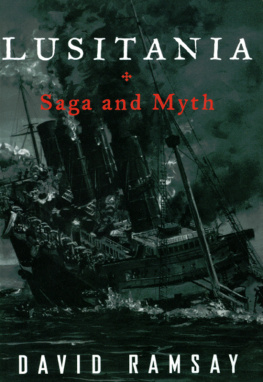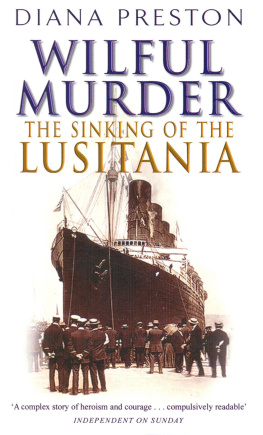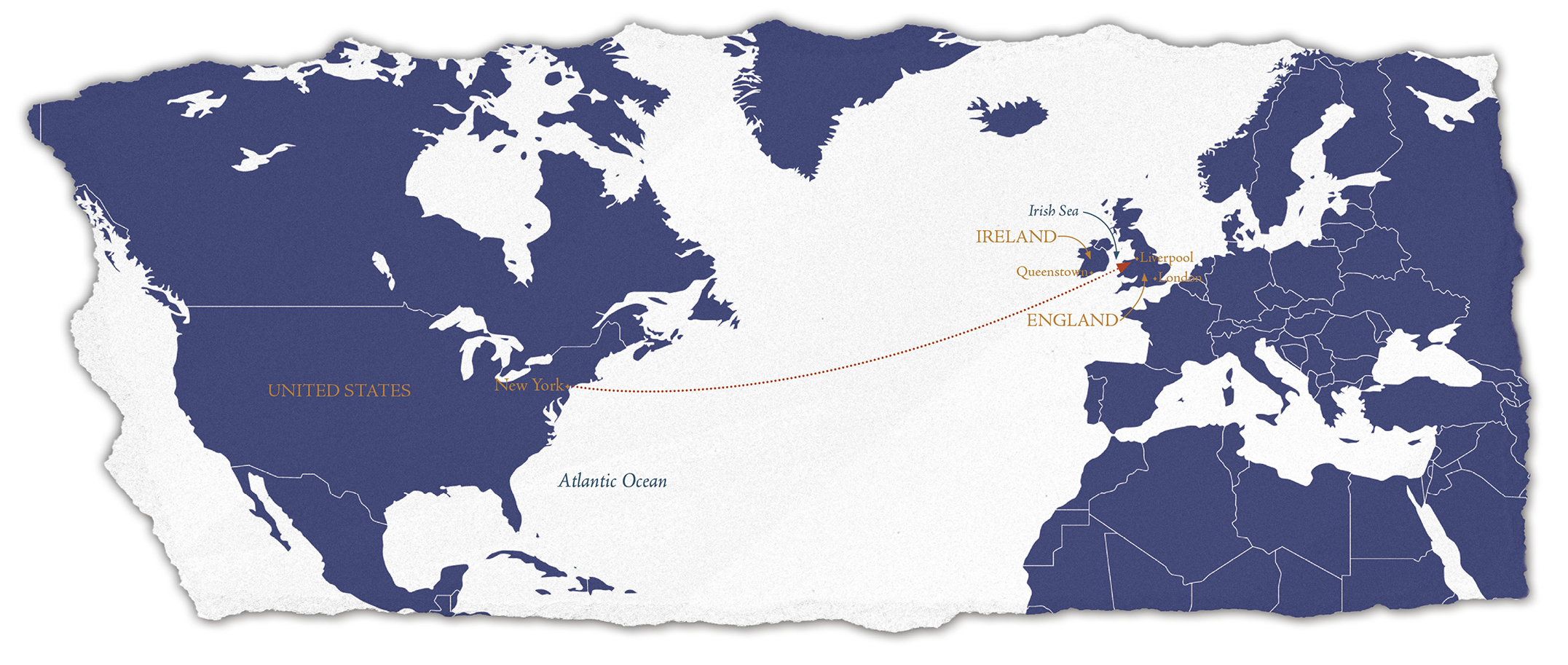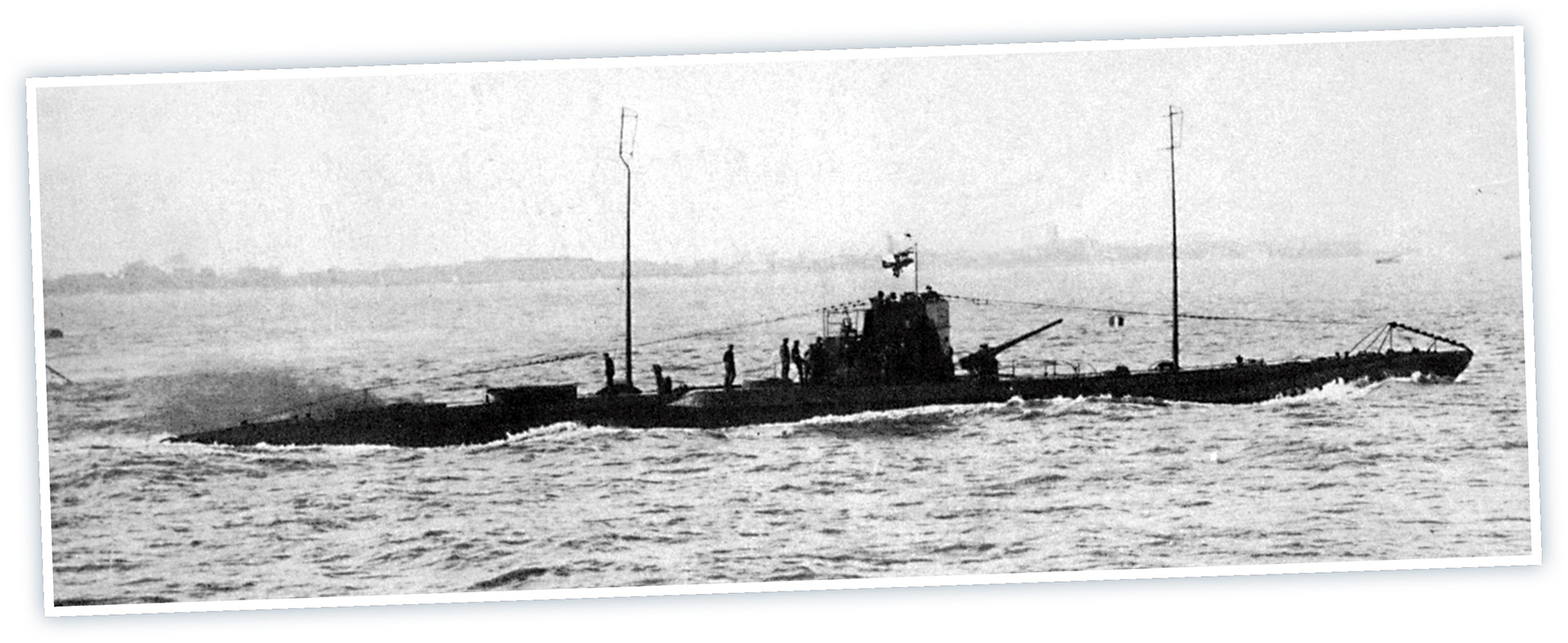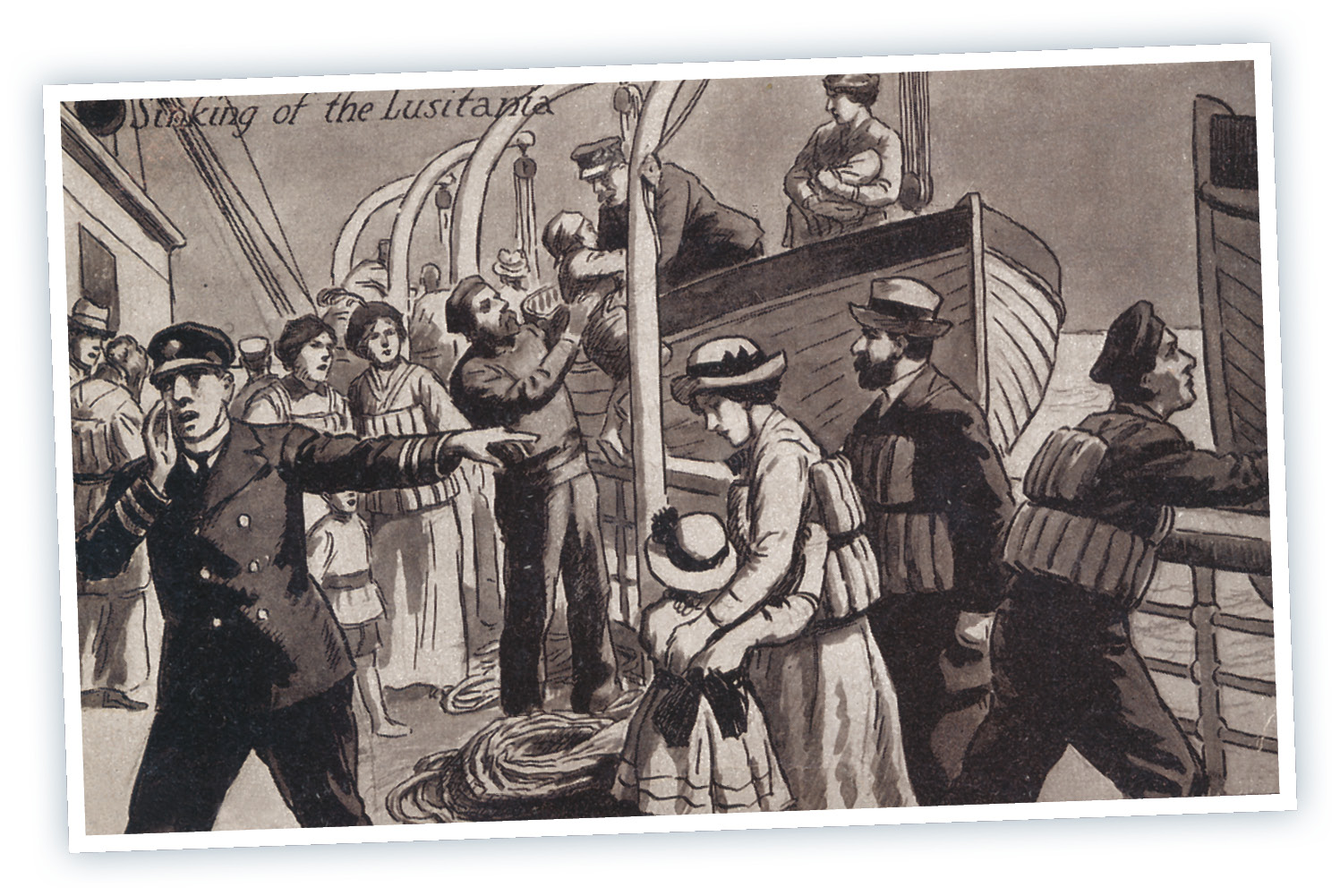For the best You Choose experience,
view in portrait (vertical) orientation.
ABOUT YOUR ADVENTURE
YOU live in a world at war. Its 1915, and World War I erupted a year earlier. The United States has remained neutral, but an event is about to take place that will help bring the U.S. into the war. How will this event affect you?
In this book youll explore how the choices people made meant the difference between life and death. The events youll experience really happened.
Chapter One sets the scene. Then you choose which path to read. Follow the links at the bottom of each page as you read the stories. The decisions you make will change your outcome. After you finish one path, go back and read the others for new perspectives and more adventures. Use your device's back buttons or page navigation to jump back to your last choice.
YOU CHOOSE the path you take through history.
CHAPTER 1
Travel in a Dangerous Time
While Europe was at war in 1915, life in the United States went on peacefully. People enjoyed themselves. One source of pleasure, for those who could afford it, was crossing the Atlantic Ocean on a luxury liner. Cunard, a ship company in England, built and sailed some of the greatest of the passenger ships. The Lusitania, finished in 1907, was one of the biggest and most luxurious of the ships. It was 785 feet long, had eight decks, and could hold 3,000 passengers and crewmembers. Although other ships, such as Titanic, were bigger, no passenger ship was faster. The Lusitanias four turbine engines propelled the ship to an average speed of about 25 knots.
The Lusitania arrives for the first time in New York September 13, 1907.
In August 1914, the month after the war broke out, there were only three Cunard passenger ships still operating. The Lusitania was one of them.
But the Lusitania carried more than passengers.The cost of building the ships was so high that Cunard sought financial aid from the British. In exchange for money to build ships, Cunard carried supplies for the government. When war with Germany broke out, the Lusitania regularly carried wartime supplies from the U.S. to England.
The Lusitania was traveling from New York to Liverpool.
German officials knew some commercial liners were carrying secret shipments. They were also angry at England for the naval it had set up in 1914. The British Grand Fleet prevented German ships from leaving their home waters. It also prevented foreign ships carrying supplies, including food, from reaching Germany.
The Germans announced they were establishing a war zone in the waters surrounding the British Isles in February 1915. German submarines, called U-boats, traveled underwater and could get through the British blockade to reach the area. Germany vowed to attack any merchant ships in these waters.
A German submarine patrols during World War I.
Angered by the announcement, U.S. President Woodrow Wilson told Germany it would be accountable for any American lives or property lost in such attacks.
The Lusitania prepared to sail from New York Harbor on its 202nd Atlantic crossing on May 1, 1915. Aboard were 702 crewmembers and 1,257 passengers, including 129 children. While most of the passengers were British, there were more than 150 Americans onboard. You are aboard the Lusitania on what will be its last voyage.
CHAPTER 2
Boy on Board
It is May 1, 1915. Lusitania is about to sail from New York, and you and your family are onboard. You are one lucky 12-year-old! As the ship sets sail, you decide to go exploring. There are eight decks, and you can explore most of them. You invite your younger sister, Miriam, to join you, but shed rather stay with your mother. Shes such a baby.
You race through a lounge area and find yourself in a fancy room with marble mantelpieces. Suddenly a mans voice speaks sharply. What are doing in here, boy? You turn to see a man in a white uniform glaring at you. This room is for gentlemen, not children, the man says to you.
Passengers relax on the deck of the Lusitania.
A tall, handsome man sitting nearby speaks up. Its all right, Jameson. The boy means no harm.
The man in the uniform changes his tone instantly. Very well, Mr. Vanderbilt, he says, and moves away.
Alfred Vanderbilt rises from his chair and looks you over. Is this your first time on the Lusitania, lad? he asks you.
First time on any ship, sir, you reply.
Vanderbilt smiles. Ive made this trip across the sea so many times that it means nothing to me. But to you it must be a great adventure.
Yes, it is, sir, you tell him. You like this Mr. Vanderbilt.
He walks with you out on deck and asks about your family. Then he says he hopes to see you again and strolls down the deck. Later you tell your parents about your meeting with the friendly man.
Alfred Vanderbilt? your father gasps. Hes from one of the richest families in America.
You dont see Vanderbilt again, but you meet a number of children your own age and have lots of adventures.
It is now May 7, and your trip across the Atlantic is nearly at an end. You have just finished eating lunch with your family when there is a loud noise above deck. What happened? your father asks a crewmember when you go on deck.
Weve been hit by a German torpedo, sir. Best to get your wife and children into a lifeboat. Just in case.
On the side of the ship, men are helping people into lifeboats and then lowering the boats to the water. Are you sure this is necessary, John? your mother asks, looking anxiously at your father.
Women and children are loaded into a lifeboat.
The man said its a safety precaution, your father says. The ship will be fine. But you must go with the children for now.
Your mother gathers you and Miriam and gets in line for the next lifeboat. If its just a precaution, you would rather stay with your father. You dont want to leave him alone. You are almost to the front of the line and about to get into the lifeboat. Youd better make up your mind.


